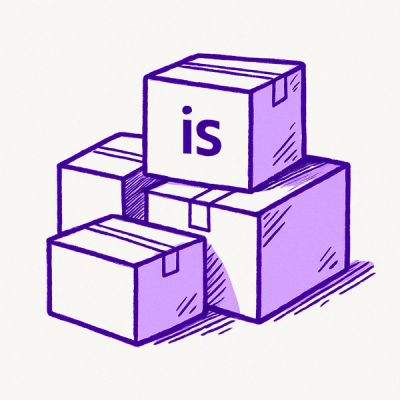
Research
/Security News
Toptal’s GitHub Organization Hijacked: 10 Malicious Packages Published
Threat actors hijacked Toptal’s GitHub org, publishing npm packages with malicious payloads that steal tokens and attempt to wipe victim systems.
cardano-express-web3-skeleton
Advanced tools
Backend skeleton for Cardano Web3 dApps. This backend uses Express as server and MongoDB as user database. It provides a basic API Rest for authentication and authorization using CIP-0008 Signing spec and CIP-0030 Cardano dApp-Wallet Web Bridge.
This is a basic API REST skeleton for Cardano dApp authentication and authorization written on JavaScript using async/await. This backend utilizes the standard CIP-0008 signing spec. The project has all necessary endpoints for athentication, authorization and user management. The authentication token is generated as a JWT web token, therefore it can be shared easily by other services.
The authentication process is driven by signed payloads with the CIP-0030 Cardano dApp-wallet web bridge. There are three actions that require the user's wallet signature, Signup, Login and Reset. Once the payload with the desired action is signed with the correct private key, a JWT web token is issued and takes control of the session.
This repository is self-contained and you can use ir and test it through the test suite and Postman. You can read more about the Postman examples in the usage section below. This is a good method for developing and debugging the code. But a front end is required to better understand how it works.
I've created another template for creating your web3 applications with ReactJS. You can clone it from the next repository jmagan/cardano-react-web3-skeleton.
cf-ipcountry that CloudFlare creates when protecting your website).Authorization header with value Bearer yourToken where yourToken is the signed and encrypted token given in the response from the login process.git clone https://github.com/jmagan/cardano-express-web3-skeleton.git ./myproject
cd myproject
npm install
npm update
.env.example.env.env is already ignored, so you never commit your credentials..env to your environment server(development or production)server on your environment to the url of your server, for development mode use http://localhost:3000IMPORTANT: By default token expires in 3 days (4320 minutes set in .env.example). You can refresh token at endpoint GET /token. If everything it´s ok you will get a new token.
To ensure the deliverability of emails sent by this API, Mailgun is used for mailing users when they sign up, so if you want to use that feature go sign up at their website https://www.mailgun.com
If you want to try a different method it´s ok, I used https://nodemailer.com for this API and they have different transport methods like: smtp.
Language is automatically detected from Accept-Language header on the request. So either you send locale manually on the request or your browser will send its default, if Accept-Language header is not sent then it will use en locale as default.
There are 3 available commands for this: fresh, clean and seed.
npm run command
fresh cleans and then seeds the database with dynamic data.clean cleans the database.seed seeds the database with dynamic data.npm run dev
You will know server is running by checking the output of the command npm run dev
****************************
* Starting Server
* Port: 3000
* NODE_ENV: development
* Database: MongoDB
* DB Connection: OK
****************************
It´s a good practice to do tests at your code, so a sample of how to do that in mocha/chai is also included in the /test directory
npm run test
Format your code with prettier by typing:
npm run format
Format all your markdown files with remark by typing:
npm run remark
Lint your code with ESLint by typing:
npm run lint
Once everything is set up to test API routes either use Postman or any other api testing application.
In order to use some endpoints, we need to sign payloads according to CIP-0008 signing spec. For this purpose, the project has a cli util for creating the keys and signatures. This can simulate 255 unique wallets selecting a number between 0 and 254. The cli util starts with the following command:
$ node mockWalletSignatures.js
In order to get the key and signature, we need to go through three steps.
In the next example, we can find how to create a login payload for the admin's account.
🤖 Please, select the action for the payload (S: Signup, R: Reset, L: Login)
Action: L
🤖 Creating login payload.
🤖 Choose a number between 0 and 254. Each number represents a unique address and private key. For example in the sample data, the number 0 is the wallet for admin and the number 1 for the simple user.
Wallet number: 0
🤖 Generating wallet address, key and signature.
📪 Address: stake1u89exkzjnh6898pjg632qv7tnqs6h073dhjg3qq9jp9tcsgq0wfzr
🔑 Key: a201012158203b6a27bcceb6a42d62a3a8d02a6f0d73653215771de243a63ac048a18b59da29
📝 Signature: 845828a16761646472657373581de1cb9358529df4729c3246a2a033cb9821abbfd16de4888005904abc41a166686173686564f4583a7b22686f7374223a22484f5354222c22616374696f6e223a224c6f67696e222c22656d61696c223a2261646d696e4061646d696e2e636f6d227d5840f93faf1473ad7ff9cdcbc4e2acbb4c24e90329c2ee77b04a8fcc8a716e04df9ae4094fb86f1ff3a88c85e892bf166d1b03bcf5c98cb821be40c285d9fea3e804
The address, key and signature will be used calling the endpoints. This login endpoint call is currently implemented in the postman-example.json.
You can import the example collection to Postman. To import, click the import button located and select postman-example.json located within the root directory.
Go to manage environments to create environments for development, production, etc. On each of the environments you create you will need to:
Create a new key authToken and within the /login request this value is automatically updated after a successfull login through a script located in the tests tab. Each time you make a request to the API it will send Authorization header with the token value in the request, you can check this on the headers of users or cities endpoints in the Postman example.
Create a second key server with the url of your server, for development mode use http://localhost:3000
This is a REST API, so it works using the following HTTP methods:
If you need to add more models to the project just create a new file in /app/models/ and it will be loaded dynamically.
If you need to add more routes to the project just create a new file in /app/routes/ and it will be loaded dynamically.
When you create a new controller, try to also create another folder with validations and helpers. Ex. /countries, /countries/validators and /countries/helpers. An example of this is included in the repository.
If you find it useful, please consider inviting me a coffee :)
You are welcome to report any bugs or improvements. Pull requests are always welcome.
This project is open-sourced software licensed under the MIT License. See the LICENSE file for more information.
FAQs
Backend skeleton for Cardano Web3 dApps. This backend uses Express as server and MongoDB as user database. It provides a basic API Rest for authentication and authorization using CIP-0008 Signing spec and CIP-0030 Cardano dApp-Wallet Web Bridge.
The npm package cardano-express-web3-skeleton receives a total of 7 weekly downloads. As such, cardano-express-web3-skeleton popularity was classified as not popular.
We found that cardano-express-web3-skeleton demonstrated a not healthy version release cadence and project activity because the last version was released a year ago. It has 1 open source maintainer collaborating on the project.
Did you know?

Socket for GitHub automatically highlights issues in each pull request and monitors the health of all your open source dependencies. Discover the contents of your packages and block harmful activity before you install or update your dependencies.

Research
/Security News
Threat actors hijacked Toptal’s GitHub org, publishing npm packages with malicious payloads that steal tokens and attempt to wipe victim systems.

Research
/Security News
Socket researchers investigate 4 malicious npm and PyPI packages with 56,000+ downloads that install surveillance malware.

Security News
The ongoing npm phishing campaign escalates as attackers hijack the popular 'is' package, embedding malware in multiple versions.